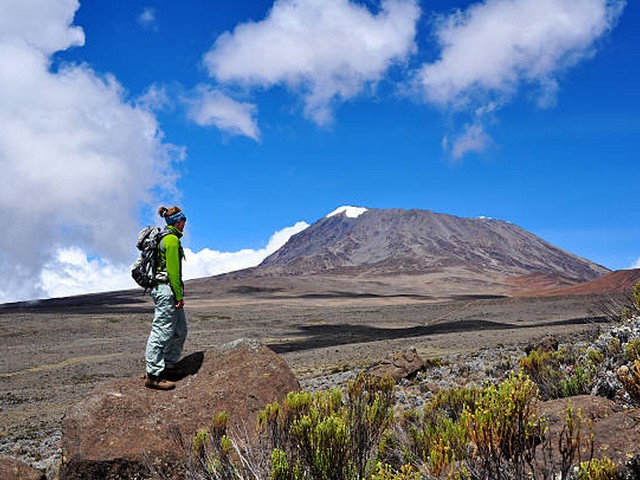Filming Kilimanjaro: Tips For Adventure Videographers
Capturing the Majestic Beauty of Africa’s Rooftop
Mount Kilimanjaro, standing proudly as Africa’s highest peak, offers more than just a climbing challenge. It’s a vibrant canvas, alive with swirling mists, lush rainforests, stark alpine deserts, and gleaming snow caps. For adventure videographers, Kilimanjaro is not merely a mountain; it’s a dynamic backdrop that demands to be captured. Whether you’re a seasoned filmmaker or an enthusiastic amateur, the allure of filming Kilimanjaro is undeniable.
At Kilimanjaro Centre for Trekking and Ecotourism (KCTE), we understand the magnetic pull of Kilimanjaro. We’re not just about guiding climbers; we’re here to help you seize its essence through your lenses, making every frame a breathtaking testament to your journey. This blog post will serve as your ultimate guide to filming Kilimanjaro, ensuring you return with more than just memories but a visual masterpiece that captures the soul of this iconic giant.
Preparing for Your Filmmaking Adventure
Know Your Terrain
Kilimanjaro’s diverse ecosystems offer a plethora of visuals. From the dense rainforests of the lower slopes to the alpine desert’s lunar-like landscapes and the icy summit, each zone presents unique challenges and opportunities for videographers. Understanding these environments is crucial in planning your shots and equipment.
Pick the Right Gear
The right equipment can make or break your filming experience on Kilimanjaro. Opt for lightweight, durable gear that can withstand the mountain’s harsh conditions. A good quality, weather-resistant camera, versatile lenses, and a stable tripod are essentials. Don’t forget ample batteries and storage media, as charging facilities are scarce once you start your ascent.
Acclimatize to the Altitude
Altitude can affect not only you but the performance of your equipment. Cameras can behave unpredictably in cold, high-altitude environments. Give yourself and your gear ample time to acclimatize. This includes testing how your equipment responds to the colder temperatures and thinner air.
Capturing the Essence of Kilimanjaro
Embrace the Golden Hours
The soft glow of dawn and dusk provides magical lighting, ideal for capturing the vast landscapes of Kilimanjaro. Plan to shoot during these golden hours when the light adds drama and depth to your scenes. The interplay of light and shadow across the mountain’s contours can bring your footage to life.
Include Human Elements
While the natural scenery is stunning, including climbers and local guides in your shots can add a powerful narrative element. Show the human struggle and triumph against the backdrop of the towering mountain. These stories can make your film relatable and more engaging.
Experiment with Perspectives
Utilize a variety of shooting angles to capture the grandeur of Kilimanjaro. Aerial shots using drones can offer breathtaking overviews of the sprawling landscapes, while ground-level shots capture the intimate details of the terrain. Always ensure you adhere to park regulations concerning drone usage.
Overcoming Challenges
Dealing with Weather
Weather on Kilimanjaro is unpredictable. Sudden rain, wind, and extreme cold can appear without warning. Protect your equipment with weatherproof covers and be prepared to change your shooting plans according to the weather conditions. Flexibility is key.
Ensuring Sustainable Filming Practices
Respect the natural environment by adhering to Leave No Trace principles. This includes packing out all batteries and media waste, minimizing habitat disturbance, and ensuring that your presence does not negatively impact the wildlife or local communities.
Why Choose KCTE for Your Kilimanjaro Film Expedition?
Choosing the right tour operator is crucial for a successful filming expedition. Kilimanjaro Centre for Trekking and Ecotourism (KCTE) stands out for several reasons:
- Experienced Guides: Our guides are not only climbing experts but also understand the unique needs of filming crews. They can lead you to the most picturesque locations and assist in logistics.
- Customizable Itineraries: We tailor your climbing and filming schedule to maximize your opportunities to capture the perfect shots.
- Support for Filming Permissions: We help simplify the process of obtaining necessary filming permits and navigating local regulations.
Conclusion: Your Next Great Filming Adventure Awaits!
Filming Kilimanjaro is a rare opportunity to blend adventure with artistic exploration. Each shot you take is a story waiting to be told, a slice of the mountain’s soul captured forever. Whether you’re creating a documentary, a travel vlog, or collecting footage for your next big film project, Kilimanjaro offers a spectacular setting that is unmatched anywhere in the world.
Ready to embark on this incredible filming journey? Book your Kilimanjaro climbing and filming expedition with Kilimanjaro Centre for Trekking and Ecotourism (KCTE) today! Let us help you capture not just videos but experiences that will resonate with viewers worldwide.
FAQ: Filming on Kilimanjaro
What is the best time of year to film on Kilimanjaro?
The best times are during the dry seasons, from late June to October and from late December to March, when clearer skies and milder weather conditions prevail.
Do I need special permits to film on Kilimanjaro?
Yes, filming on Kilimanjaro requires special permits that can be arranged through an accredited tour operator like KCTE.
How long does it take to climb and film on Kilimanjaro?
Most filming expeditions take between 7 to 9 days, depending on the route and the extent of filming required.
Capture the adventure, the challenge, and the beauty of Kilimanjaro with KCTE. Your audience awaits the awe-inspiring sights that only Kilimanjaro can offer. Join us, and let’s create stunning visuals that soar as high as the summit itself.




